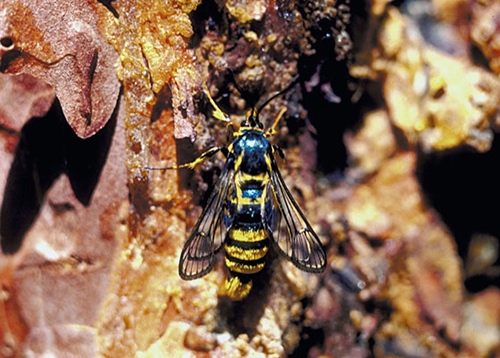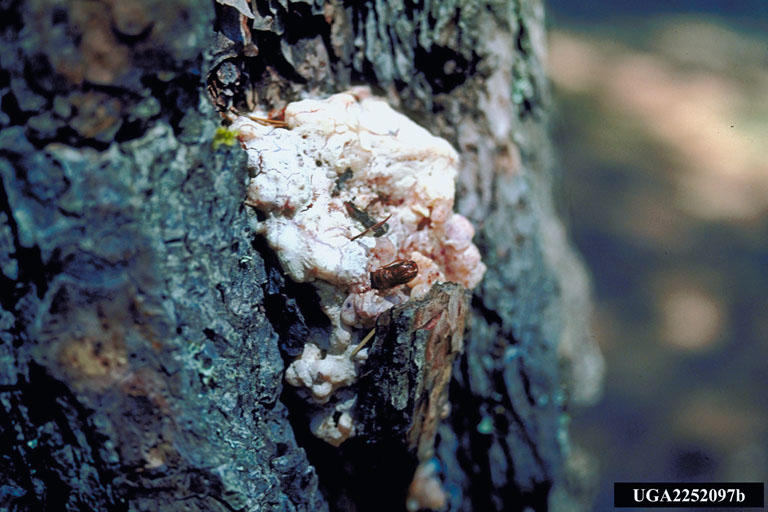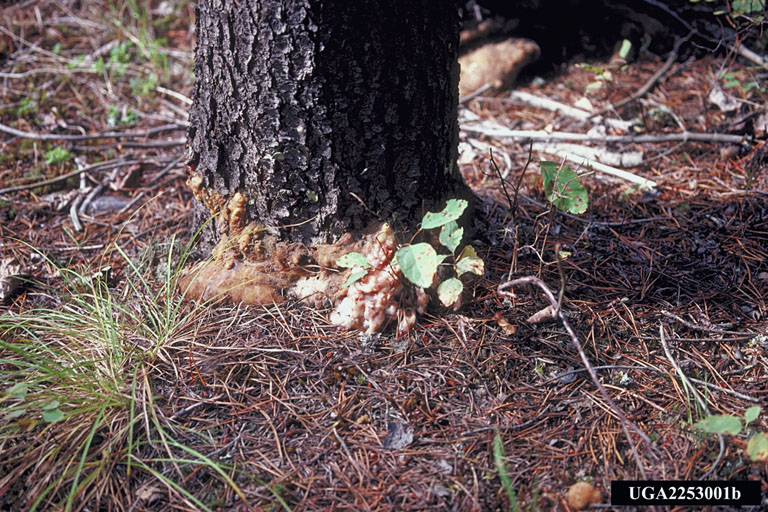Integrated Pest Management
Sequoia Pitch Moth
Synanthedon sequoiae
Pest Description
- adults: 1 – 1 1/2 inches; black with yellow markings
- look like paper wasps
- larvae: up to 1 inch; pinkish white with brown head capsule
Host Plants, Diet & Damage
- Austrian pine; scotch pine; other pines
- larvae feed on cambium tissue and sapwood
- primarily found in the trunk and larger branches
- larvae found within large resin masses on bark or in a bark notch behind the resin mass
- pupal skins extrude from exit holes in the resin mass
- damage is aesthetic; cause unsightly resin masses on trees, but rarely harm trees
- resin masses/old wounds can be re-infested
Biology, Life Cycle & Damaging Life Stage
- overwinter as larvae within resin masses or in tree
- adults are active late-April through August (northern Utah)
- eggs laid on bark near wounds or old attack sites
- larvae bore directly into cambium/sapwood layers to feed
- one generation every 2 years, but overlapping populations occur
- larvae are the damaging stage
IPM Recommendations
- Management is typically not needed.
- Properly plant and keep trees healthy.
- Pick resin masses from tree and crush larvae within.
- Avoid pruning/injuring trees April through August.
- Insecticide treatments are not recommended; specifically systemic insecticides (e.g., imidacloprid, dinotefuran) are not effective.




